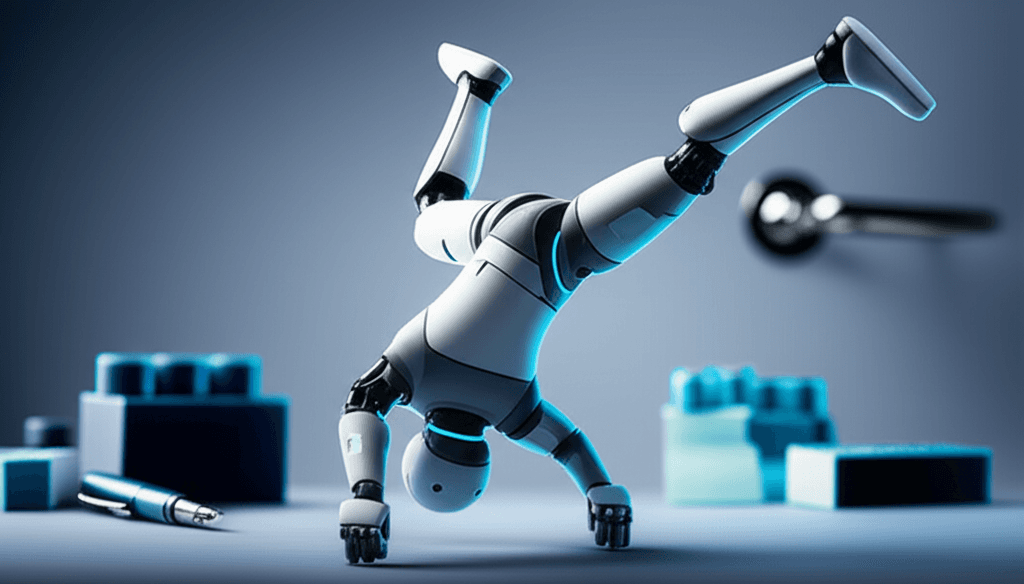Unitree's Agile R1 Humanoid Robot Debuts at $6,000, Set to Disrupt Market.
Unitree's R1 promises affordable humanoid hardware, but its acrobatic focus underscores the enduring AI challenge of Moravec's Paradox.
July 26, 2025

In a move that has sent ripples through the robotics industry, Chinese startup Unitree has unveiled its latest humanoid robot, the R1, at a remarkably low price point of just under $6,000.[1][2] Promotional videos showcase the R1 performing impressive athletic feats, including cartwheels, handstands, and even kickboxing maneuvers, highlighting its advanced mobility.[3][4] Marketed as "born for sport," the robot is a testament to the rapid advancements in robotics hardware and the falling costs of manufacturing.[5][4] However, while the R1's acrobatic prowess is undeniable, its introduction also brings into sharp focus a long-standing challenge in artificial intelligence known as Moravec's Paradox, which posits that tasks easy for humans are often incredibly difficult for machines, and vice versa. This raises critical questions about the R1's practical utility beyond its eye-catching stunts and what its emergence signifies for the future of humanoid robotics.
The Unitree R1 is a lightweight and agile machine, standing 121 centimeters tall and weighing 25 kilograms.[5] It features 26 joints, which contribute to its impressive range of motion.[5] The robot is also equipped with a multimodal large language model, enabling it to process both voice commands and visual information, suggesting a capacity for more sophisticated interaction than its purely acrobatic demonstrations might imply.[6][7][8] Unitree's pricing strategy for the R1 is particularly aggressive, positioning it as one of the most affordable humanoid robots on the market.[6][1] This significant price reduction compared to its predecessors, the G1 and H1 models which were priced at $16,000 and $90,000 respectively, is intended to make the technology more accessible to individual developers, educators, and consumers.[3][1][9] This move is seen as a strategic effort by the Hangzhou-based company to democratize robotics and strengthen China's position in the global market.[1][10] By making the R1 more attainable, Unitree hopes to foster a community of developers who can create novel applications for the platform, potentially accelerating innovation in the field.[6][10]
Despite the R1's impressive agility, its practical capabilities for performing everyday tasks remain a significant unknown, bringing the discussion to Moravec's Paradox.[3] This principle, articulated in the 1980s by researchers like Hans Moravec, Rodney Brooks, and Marvin Minsky, observes that it is relatively easy to make computers exhibit adult-level performance in tasks like playing chess or solving complex mathematical problems, but incredibly difficult to give them the perceptual and motor skills of a one-year-old.[11][12] The paradox suggests that high-level reasoning requires very little computation, while sensorimotor skills, which have evolved in humans over millions of years, are computationally intensive to replicate.[11][13] This is because skills like walking, navigating a cluttered room, or picking up a variety of objects are largely unconscious for humans, yet they involve an immense amount of sensory processing and fine motor control.[13][14] The R1's promotional materials, with their focus on pre-scripted acrobatic routines, seem to underscore this very point.[3] While a cartwheel is a complex motor skill, it is a planned and repeatable action, a stark contrast to the dynamic and unpredictable nature of most real-world environments.
The R1's current design, with hands that appear to be fixed in a fist, further illustrates the challenges highlighted by Moravec's Paradox.[15] The inability to grasp and manipulate objects with dexterity severely limits the robot's potential for practical applications, such as household chores or factory work.[15][4] This limitation is a common hurdle for many humanoid robots, with companies like Tesla reportedly facing delays in the production of its Optimus robot due to the complexities of developing useful hands.[4] The R1's emphasis on movement over manipulation suggests that Unitree is prioritizing the development of robust locomotion and balance, which are foundational for any mobile robot.[3] The company's own messaging acknowledges this, with a statement in a promotional video noting, "Movement first, tasks as well (A diversity of movement is the foundation for completing tasks)."[3] This approach, while pragmatic from an engineering perspective, means that the dream of a truly general-purpose humanoid assistant remains on the horizon. The intelligence and autonomy of the R1, despite its integrated AI, are still largely a mystery, and its ability to navigate and interact with the world in an unscripted manner has yet to be demonstrated.[3]
In conclusion, the Unitree R1 represents a significant milestone in the evolution of humanoid robotics, primarily due to its accessibility and advanced mobility.[6] Its low price point has the potential to spur innovation by putting capable hardware into the hands of a wider range of researchers and hobbyists.[10] However, the R1's current iteration, with its focus on spectacular stunts over practical task completion, serves as a powerful reminder of the enduring relevance of Moravec's Paradox.[1] The path to creating truly useful humanoid robots is not just about impressive acrobatics, but about mastering the seemingly simple, yet incredibly complex, sensorimotor skills that humans take for granted.[13][14] While the R1's cartwheels may capture our imagination, its ability to one day perform the mundane tasks of daily life will be the true measure of its success and the progress of the robotics industry as a whole. For now, the R1 stands as an impressive technological achievement, but one that also highlights the long road ahead in the quest to build truly intelligent and capable humanoid companions.
Sources
[2]
[4]
[5]
[6]
[8]
[9]
[10]
[11]
[12]
[13]
[14]
[15]